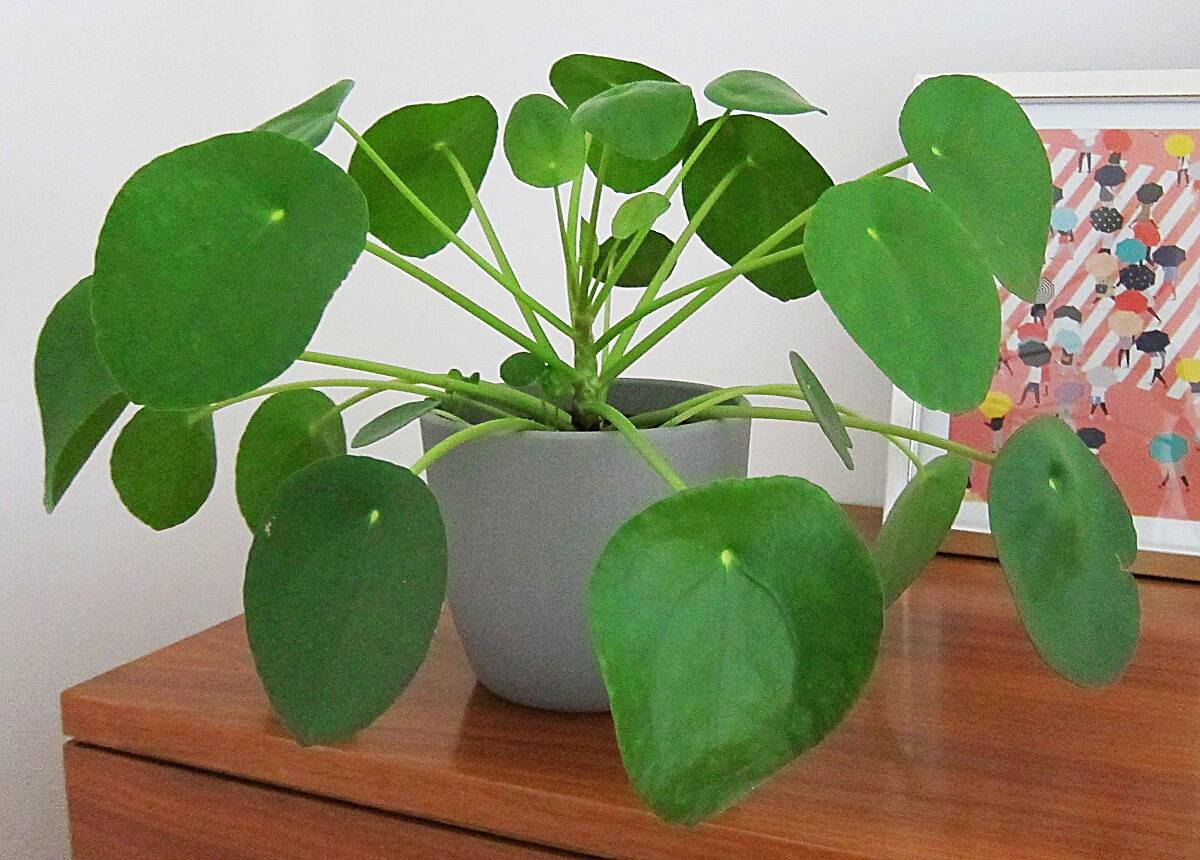Did you know that the Chinese money plant holds an Award of Garden Merit by the Royal Horticultural Society? One of the qualifying factors for the award is that the plant must be hardy. Secondly, the plant must not require highly specialist growing conditions or care.
Pilea plants are hardy down to USDA zone 10 and have exhibited outstanding excellence for garden use and decoration.
What does this mean for you?
More...
It means that even if you are a complete gardening noob or have the bad luck of inevitably killing your houseplants – you have a chance at growing the Chinese money plant successfully.
Want to know how?
Let’s begin:
About the Chinese money plant (Pilea peperomiodes)
Also known as the pancake plant, missionary plant, Mirror plant, Pass It on Plant, UFO plant, or just Pilea (its genus name) is actually a succulent plant, native to Yunnan and Sichuan in Southern China.
In 1945, the species was found by Norwegian missionary Agnar Espegren and took some cuttings with him back to Norway. This is probably the reason why they are called missionary plants.
Since then the plant has been spread amongst amateur gardeners via cuttings. The Chinese money plant grows 20 - 30 cm tall and wide. This makes them suitable for container life.
Basic requirements
- Growing pots – This is a matter of preference but terracotta pots perform well with these plants
- Light and temperature requirement – a bright windowsill with adequate warmth and sunlight
- Potting soil for the Chinese money plant – Loose and easy to drain pot mix for succulents. The plants don’t like sitting in too much water.
- Pilea Live Plant
Propagating Chinese money plant
If you’re like most gardeners who don’t live in the Scandinavian countries, you’ll realize that the biggest obstacle to growing this plant is actually finding one.
Your only option it to try to check from friends if they can lend you some cuttings or purchase them online.
The plant will produce suckers or pups or little baby plants which emerge at the base of the mother plant.
Cut them at the base preferably with some roots and plant them in a separate pot – in case there are no roots, don’t panic – instead, place them in a glass of water and let them develop the roots. This takes about one to two weeks.
Once the babies are looking strong enough, transplant them into a proper medium-sized pot.
One thing you’ll realize is that within a short time, you’ll have plenty of Pilea peperomiodes in your plant arsenal. Feel free to share some with your friends and family. After all, isn’t this the reason why the Chinese money plant is called the missionary plant?
Spreads like the gospel!
Planting
Once your pups have taken root, it’s time to carefully plant them in designated pots. Here’s how to do it.
Step 1: Thoroughly disinfect your terracotta pots with one-part water and one-part bleach.
Step 2: Use sandy, well-draining soil to plant them. Alternatively, use a recommended potting soil for the Chinese money plant.
Step 3: Plant them and firm gently around them root zone.
Step 4: Apply moisture on the potting media and place them where they can receive lots of indirect light.
How to take good care of your Chinese money plant
Light requirement
Give them medium indirect sunlight. To do this, place your plants on a window sill. But remember to filter out the light as much as possible – you can use a light curtain to do so.
Lastly, make sure to take care of phototropism. This is tendency of your money plant to grow directionally in response to a light source – though some grow away from the source.
Now, to achieve this, rotate your plants regularly to allow your plant to grow proportionally.
Water application
Do not overwater your Chinese money plant. It’s important not to follow a watering schedule – instead stick a finger into the pot mix – if it’s too dry, then you need to water. If it’s still too wet then it’s time to give them a good thorough drink.
But most importantly, trust your gut feeling – if you feel your Pilea needs watering or otherwise, then you’re probably right. When you observe the leaves drooping and curling downsides, most often it’s a sure sign that you’re overwatering your plants.
Under worst conditions, root rot will be inevitable.
Learn how to water potted plants the right way.
Fertilizer Application
You don’t need to worry about feeding your money plant frequently. They need very minimal feeding you need to occasionally provide them with standard houseplant fertilizer.
Conclusion
The Chinese money plant is a distinctively beautiful, unique, and probably one of the easiest houseplants to grow.
With bright green pancake-shaped leaves that provide an adorable and welcome burst of color, you can comfortably feature this plant in your interiors.
And why shouldn’t you when you’ve just read how to find, propagate, and even got tips on Pilea plant care.
Back to you:
Have we left out any important tips? Please leave them in the comments section or let us know what you’re up to.
Happy Gardening!


